Celestron Outland 8x25 Handleiding
Celestron
Verrekijker
Outland 8x25
Bekijk gratis de handleiding van Celestron Outland 8x25 (5 pagina’s), behorend tot de categorie Verrekijker. Deze gids werd als nuttig beoordeeld door 9 mensen en kreeg gemiddeld 4.7 sterren uit 5 reviews. Heb je een vraag over Celestron Outland 8x25 of wil je andere gebruikers van dit product iets vragen? Stel een vraag
Pagina 1/5

Celestron Binoculars
Thank you for purchasing Celestron binoculars and we hope you will have many years of pleasure with them. To maximize your enjoyment of the binoculars, please
read these instructions on use and care before using them.
1. Adjusting the Interpupillary Distance (IPD)
Since the distance between the eyes (specifically, the distance between the centers of the pupils) varies among individuals, the two eyepieces of the binoculars must be
correctly aligned (adjusted). This is called adjusting the interpupillary distance. To adjust this distance, lift the binoculars up to your eyes (using both hands) and look
through them at an object in the distance. Move the two halves of the binoculars about the hinge until you see one clear circle of image through both eyes.
2. Adjusting Focus (see note below if you have the UpClose No Focus models)
Since most people have a variance of vision from their left eye to their right eye, you must adjust the focusing system.
Use the following steps to achieve focus: (1) Close your right eye and look through the left side of the binoculars
with your left eye at the subject matter. Rotate the center focusing wheel until the image appears in sharp focus; (2)
Close your left eye and look through the right eyepiece (called the diopter). Rotate the right eyepiece until the image
appears in sharp focus; (3) Now look through both eyepieces with both eyes open. Since you’ve already adjusted the
right eyepiece, use only the center focusing wheel to refocus on a new object at a different distance.
Note: If your binocular has a diopter indicator, please note the setting for later use for faster focus adjustment.
For Zoom Binocular models ---- to increase or decrease power, move the zoom lever. To adjust focus you first
zoom the binoculars to the highest power and then adjust the focusing system as above. Then, when zooming in and
out your binoculars will be in focus.
Hint: Eyeglasses worn for nearsightedness should be worn when using binoculars as you may not be able to
reach a sharp focus at infinity without them.
Note for owners of UpClose No Focus Binoculars – these binoculars have the focus fixed so that after adjusting the IPD (discussed above), you just pick
them up and use them. If you wear eyeglasses for nearsightedness, you should use them with these binoculars. Also, the collimation may be slightly off if the
vision in your two eyes is slightly different.
3. Set the Rubber Eyecups
Leave the Rubber Eyecups up if you do not wear eyeglasses but fold them down if you do wear eyeglasses to obtain the maximum field of view. When done observing,
fold the eyecups up for storage.
Now you are ready to use your binoculars --- enjoy the view!
4. Tripod Adaptability
Some binoculars feature a built-in tripod adapter fitting. On these models, a threaded screw hole is underneath a cap. To attach a binocular tripod adapter, remove the
cap and then thread the screw from the binocular tripod adapter into the threaded screw hold. The other end of the binocular tripod adapter attaches to a photographic
tripod. Mounting binoculars this way allows for added stability and comfort especially when viewing at high powers.
Roof Prism Binocular Porro Prism Binocular
5. Care and Cleaning
Binoculars do not need routine maintenance other than making sure that the objective lenses and eyepieces are kept clean. If repairs become necessary, they should be
serviced by the manufacturer or a qualified binocular repair company. Collimation (optical alignment) is the biggest concern with binoculars. If your binoculars are
roughly handled or dropped, there is a good chance that the collimation will be out and they should be serviced. Dirty objectives and/or eyepieces mean less light
transmission and loss of brightness as well as unsharp images. Keep your optics clean! When not using your binoculars store them in the case provided. Avoid
touching the glass surfaces but if fingerprints (which contain mild acid) get on them, they should be cleaned as soon as possible to avoid damaging the coatings. To
clean the optical surfaces, we recommend a lens/optics cleaning kit available at most photo or optical shops and follow the instructions provided closely. If you have a
lot of dust or dirt accumulated, brush it off gently with a camel’s hair brush and/or utilize a can of pressurized air before using the cleaning kit. Alternately, you could
use the Celestron LensPen (# 93575) made especially for cleaning binoculars. Never attempt to clean your binoculars internally or try to take them apart!
6. Caution! Viewing the sun may cause permanent eye damage. Do not view the sun with your binoculars or even with the naked eye.
7. Problems or Repair
If warranty problems arise or repairs are necessary, contact the Celestron customer service department if you live in the U.S.A. or Canada. If you live elsewhere, please
contact the Celestron dealer you purchased the binoculars from or the Celestron distributor in your country (listings on the Celestron website).
8. Warranty
Your binocular has the Celestron No Fault Limited Lifetime Warranty for U.S.A. and Canadian customers. For complete details of eligibility and for warranty
information on customers in other countries visit the Celestron website.
2835 Columbia Street • Torrance, CA 90503 Tel. 310-328-9560 website 01-2010www.celestron.com
Eyepiece
Diopter
Adjustment
Focuser
Objective Lens
Eyepiece
Objective Lens
Focuser
Zoom Lever (for
Zoom Models)
Diopter
Adjustment
Tripod Adapter Thread
ENGLISH

Celestron-Ferngläser
Wir bedanken uns, dass Sie ein Celestron-Fernglas gewählt haben, und hoffen, dass Sie viele Jahre mit dem Fernglas zufrieden sein werden. Bitte lesen Sie die
nachfolgenden Bedienungs- und Pflegeanweisungen, um Ihr Fernglas optimal zu nutzen.
1. Einstellen der Pupillendistanz (PD)
Da der Abstand zwischen den beiden Augen (genauer gesagt: der Abstand zwischen den beiden Pupillenmitten) bei verschiedenen Personen unterschiedlich ist, müssen
die beiden Okulare des Fernglases korrekt eingestellt werden. Dies wird als „Einstellen der Pupillendistanz“ bezeichnet. Halten Sie hierzu das Fernglas (mit beiden
Händen) vor die Augen und betrachten Sie durch das Fernglas ein Objekt in der Ferne. Bewegen Sie die beiden Fernglashälften am Gelenk, bis Sie mit beiden Augen
einen deutlichen Bildkreis sehen.
2. Scharfeinstellung (siehe Hinweis unten, wenn Sie ein UpClose No Focus-Modell haben)
Da die meisten Personen unterschiedliche Sehstärken im linken und im rechten Auge haben, muss das
Fokussiersystem eingestellt werden. Führen Sie diese Schritte zur Scharfeinstellung aus: (1) Schließen Sie das rechte
Auge und schauen Sie durch die linke Fernglasseite, wobei das linke Auge ein bestimmtes Objekt betrachtet. Drehen
Sie am Mitteltriebrad, bis das Bild scharf angezeigt wird. (2) Schließen Sie das linke Auge und schauen Sie durch das
rechte Okular (Diopter genannt). Drehen Sie am rechten Okular, bis das Bild scharf angezeigt wird. (3) Schauen Sie
jetzt mit geöffneten Augen durch beide Okulare. Da Sie bereits das rechte Okular eingestellt haben, verwenden Sie
nur das Mitteltriebrad, um die Schärfe für ein neues Objekt bei einer anderen Entfernung neu einzustellen.
Hinweis: Wenn Ihr Fernglas eine Dioptrieanzeige hat, notieren Sie die Einstellung zur späteren Verwendung
für eine schnellere Einstellung.
Bei Zoom-Ferngläsern bewegen Sie den Zoom-Hebel, um die Leistung zu erhöhen oder zu reduzieren. Zur Scharfeinstellung stellen Sie den Zoom des
Fernglases zunächst auf die maximale Leistung ein. Stellen Sie anschließend das Fokussiersystem wie oben beschrieben ein. Das Fernglas wird dann beim Ein- und
Auszoomen scharf eingestellt sein.
Tipp: Wenn Sie normalerweise eine Brille zur Korrektur von Kurzsichtigkeit tragen, sollten Sie die Brille beim Einsatz des Fernglases ebenfalls tragen.
Andernfalls werden Sie u.U. keine Scharfeinstellung im Unendlich-Bereich erzielen.
Hinweis für Besitzer von UpClose No Focus-Ferngläsern: Diese Ferngläser haben eine feste Fokuseinstellung, d.h. sie können nach der Einstellung der
Pupillendistanz (PD) (siehe Beschreibung oben) einfach verwendet werden. Wenn Sie eine Brille für Kurzsichtigkeit tragen, sollten Sie diese mit diesen
Ferngläsern aufbehalten. Die Kollimation kann u.U. auch leicht abweichen, wenn die Sehkraft in Ihren beiden Augen etwas unterschiedlich ist.
3. Anpassen der Gummi-Augenmuscheln
Lassen Sie die Gummi-Augenmuscheln hochgeklappt, wenn Sie keine Brille tragen. Wenn Sie jedoch eine Brille tragen, stülpen Sie die Augenmuscheln um, um das
Gesichtsfeld zu maximieren. Wenn Sie mit der Beobachtung fertig sind, klappen Sie die Augenmuscheln wieder hoch, um das Fernglas zu verstauen.
Das Fernglas ist jetzt einsatzbereit – genießen Sie die Aussicht!
4. Stativanschluss
Manche Ferngläser verfügen über einen integrierten Stativadapteranschluss. Diese Modelle weisen ein Gewindeloch mit Abdeckung auf. Um einen Stativadapter am
Fernglas zu befestigen, entfernen Sie die Abdeckung und schrauben Sie das eine Ende des Stativadapters in das Gewindeloch. Das andere Ende des Stativadapters wird
an einem Kamerastativ befestigt. Das Fernglas ist insbesondere bei hohen Leistungen bei dieser Montierung stabiler und kann bequemer bedient werden.
Dachkantprismen-Fernglas Porroprismen-Fernglas
5. Pflege und Reinigung
Ferngläser müssen nicht regelmäßig gewartet werden. Sie müssen lediglich darauf achten, dass die Objektivlinsen und Okulare sauber bleiben. Falls das Fernglas
repariert werden muss, sollte dies durch den Hersteller oder ein auf Fernglasreparaturen spezialisiertes Unternehmen erfolgen. Der größte Problembereich bei
Ferngläsern ist die Kollimation (optische Justierung). Wenn das Fernglas unvorsichtig gehandhabt oder fallen gelassen wird, stimmt die Kollimation wahrscheinlich
nicht mehr und muss neu justiert werden. Verschmutzte Objektive und/oder Okulare haben eine reduzierte Lichtdurchlässigkeit, einen Helligkeitsverlust und unscharfe
Bilder zur Folge. Achten Sie auf eine saubere Optik! Bewahren Sie Ihr Fernglas bei Nichtgebrauch im bereitgestellten Behälter auf. Die Glasflächen möglichst nicht
berühren! Entfernen Sie versehentliche Fingerabdrücke (die leicht säurehaltig sind) auf Glasflächen so schnell wie möglich, um die Vergütung nicht zu beschädigen.
Wir empfehlen zum Reinigen der optischen Flächen ein Linsen-/Optikreinigungskit (in den meisten Foto- und Optikgeschäften erhältlich). Befolgen Sie die
mitgelieferten Anweisungen. Wenn sich sehr viele Staub- oder Schmutzrückstände angesammelt haben, bürsten Sie die Rückstände zuerst vorsichtig mit einer
Kamelhaarbürste ab und/oder blasen Sie sie mithilfe von Druckluft aus der Dose weg, bevor Sie das Reinigungskit verwenden. Sie können auch den speziellen
Celestron LensPen-Stift (Bestell.-Nr. 93575) zum Reinigen von Ferngläsern verwenden. Versuchen Sie niemals, das Innere des Fernglases zu reinigen oder das
Fernglas auseinander zu bauen!
6. Vorsicht! Sonnenbeobachtungen können Ihre Augen permanent beschädigen. Betrachten Sie die Sonne nicht durch das Fernglas oder mit dem bloßen Auge!
7. Probleme oder Reparaturen
Falls Probleme im Rahmen der Garantie entstehen oder Reparaturen erforderlich sind, wenden Sie sich bitte an die Kundendienstabteilung von Celestron, wenn Sie in
den USA oder in Kanada ansässig sind. Wenn Sie außerhalb der USA oder Kanada ansässig sind, wenden Sie sich bitte an den Celestron-Händler, von dem Sie das
Fernglas erworben haben, oder an den Celestron-Distributor in Ihrem Land (siehe Celestron-Website).
8. Garantie
US- und kanadischen Kunden wird für das Fernglas die Celestron eingeschränkte „No Fault“-Garantie auf Lebenszeit gewährt. Umfassende Einzelheiten zur
Qualifikation und Garantieinformationen für Kunden in anderen Ländern finden Sie auf der Celestron-Website.
2835 Columbia Street • Torrance, CA 90503, USA Tel. +1 310-328-9560 Website 01-2010www.celestron.com
Okular
Dioptrieeinstellung
Fokussierer
Objektivlinse
Okular
Objektivlinse
Fokussierer
Zoom-Hebel
(für Zoom-Modelle)
Dioptrieeinstellung
Stativadapter-Gewinde
DEUTSCH

Binoculares Celestron
Le damos las gracias por la compra de sus binoculares de Celestron y esperamos que los disfrute durante muchos años. Para disfrutar sus binoculares al máximo, lea
primero estas instrucciones sobre su uso y mantenimiento.
1. Ajuste de la distancia interpupilar (o por sus siglas en inglés IPD)
Como la distancia entre los ojos (especialmente, la distancia entre los centros de las pupilas) varía según el individuo, los dos oculares de los binoculares deben estar
correctamente alineados (ajustados). A esto se le conoce como ajuste de la distancia interpupilar. Para ajustar esta distancia, eleve los binoculares hacia los ojos
(utilizando ambas manos) y mire por ellos a un objeto alejado. Mueva las dos mitades de la unidad hasta que vea la imagen de un círculo claro por ambos ojos.
2. Ajuste del enfoque (vea la nota a continuación si tiene los modelos de enfoque fijo UpClose)
Como la mayoría de la gente tiene diferente visión en ambos ojos, deberá ajustar el sistema de enfoque.
Siga los siguientes pasos para enfocar sus binoculares: (1) Cierre el ojo derecho y por el lado izquierdo de los
binoculares mire con el ojo izquierdo al objeto en particular. Gire la rueda de enfoque central hasta que la imagen
aparezca bien enfocada. (2) Cierre el ojo izquierdo y mire por el ocular derecho (llamado la dioptría). Gire el ocular
derecho hasta que la imagen aparezca bien enfocada. (3) Ahora mire por ambos oculares con ambos ojos abiertos.
Como p3-ya p3-ha ajustado el ocular derecho, utilice sólo la rueda de enfoque central para volver a enfocar un nuevo objeto
a una distancia diferente.
Nota: si sus binoculares tienen un indicador de dioptrías, anote el valor para poder enfocar más rápidamente en
el futuro.
En los modelos de binoculares con zoom, mueva la palanca del zoom para aumentar o disminuir la potencia. Para
ajustar el enfoque, seleccione primero la mayor potencia del zoom de los binoculares y después ajuste el sistema de enfoque
como se describe anteriormente. A este punto, cuando vaya a utilizar el zoom para acercar o alejar el objeto que quiera observar sus binoculares ya estarán enfocados.
Consejo: las gafas graduadas para la miopía se deben llevar puestas cuando se utilicen los binoculares, p3-ya que es posible que no pueda enfocar bien al mirar al
infinito sin ellas.
Para los propietarios de binoculares de enfoque fijo UpClose: estos binoculares tienen el enfoque fijo para que después de ajustar el IPD (como se
describió anteriormente) pueda simplemente utilizarlos sin hacer nada más. Si lleva gafas graduadas para corregir la miopía, deberá utilizarlas con estos
binoculares. También, la colimación puede estar ligeramente descompensada si la visión de cada ojo es algo diferente.
3. Coloque los cilindros de goma
Deje los cilindros de goma hacia arriba si no lleva puestas las gafas y bájelos si las lleva puestas para obtener un campo de visualización máximo. Cuando termine de
utilizar los binoculares, baje los cilindros de goma antes de guardarlos.
Ya está listo para utilizar sus binoculares. ¡Disfrute el panorama!
4. Adaptabilidad del trípode
Algunos binoculares ofrecen un adaptador incorporado para el trípode. En estos modelos, debajo de una tapa se encuentra un orificio de tornillo roscado. Para conectar
un adaptador del trípode de los binoculares, retire la tapa y atornille el tornillo del adaptador en el orificio roscado. El otro extremo del adaptador del trípode de los
binoculares se conecta a un trípode para cámaras fotográficas. De esta forma al montarse los binoculares se obtendrá más estabilidad y comodidad, especialmente
cuando la visualización se haga con potencias mayores.
Binoculares de prisma Binoculares de prisma Roof Porro
5. Cuidado y limpieza
Los binoculares no necesitan mantenimiento rutinario, simplemente hay que mantener los oculares y el objetivo limpios. Si es necesario hacer alguna reparación, sólo
el fabricante o una empresa cualificada de reparación de binoculares podrán hacerlo. La colimación (alineación óptica) es la mayor preocupación con sus binoculares.
Si no trata con cuidado sus binoculares, es muy posible que la colimación sea incorrecta y deberá obtener el servicio necesario para corregirla. Si los objetivos u
oculares están sucios, habrá menos transmisión de luz, menos brillo e imágenes poco claras. ¡Mantenga limpias sus piezas ópticas! Cuando no utilice sus binoculares,
guárdelos en su estuche. Evite tocar las superficies de vidrio y límpielas tan pronto como sea posible si ve huellas dactilares, ya que estas contienen ácido y pueden
dañar el revestimiento protector. Para limpiar las superficies ópticas, recomendamos utilizar un limpiador especial para piezas ópticas de venta en la mayoría de las
tiendas de cámaras y productos ópticos, y seguir las instrucciones que se proporcionan. Antes de utilizar el limpiador, remueva el polvo o suciedad acumulado
utilizando una brocha de pelo de camello suavemente o un envase de aire comprimido. También puede utilizar el limpiador LensPen (Nº 93575) de Celestron que está
especialmente hecho para limpiar binoculares. Nunca intente limpiar el interior de sus binoculares o trate de desarmarlos.
6. Precaución: el mirar al sol puede causar daño permanente a los ojos. No mire directamente al sol con los binoculares o sin tener la protección adecuada.
7. Problemas o reparación
Si surgen problemas sobre la garantía o es necesario hacer reparaciones, póngase en contacto con el departamento de servicio al cliente si vive en Estados Unidos o en
Canadá. Si vive en algún otro lugar, póngase en contacto con el representante a quien le compró sus binoculares o con el distribuidor de Celestron en su país (vea la
lista en la página Web de Celestron).
8. Garantía
Sus binoculares tienen la garantía limitada de responsabilidad objetiva durante la vida útil del producto de Celestron para los clientes de Estados Unidos y Canadá. Para
obtener todos los detalles sobre el derecho de los clientes y la información sobre la garantía en otros países, visite el sitio Web de Celestron.
2835 Columbia Street • Torrance, CA 90503, USA Tel. 310-328-9560 Sitio Web 01-2010www.celestron.com
Ocular
Ajuste de
dioptría
Enfoque
Objetivo
Ocular
Objetivo
Enfoque
Palanca del zoom
(en modelos con zoom)
Ajuste de
dioptría
Adaptador para trípode
ESPAÑOL
Product specificaties
| Merk: | Celestron |
| Categorie: | Verrekijker |
| Model: | Outland 8x25 |
| Kleur van het product: | Zwart |
| Gewicht: | 396.89 g |
| Waterdicht: | Ja |
| Opbergetui: | Nee |
| Dichtstbijzijnde focus afstand: | 3.96 m |
| Prisma type: | BAK-4 |
| Vergroting: | 8 x |
| Objective diameter: | 25 mm |
| Exit pupil: | 3.1 mm |
| Oogafstand: | 17 mm |
| Blijkbare gezichtsveld: | 6.2 ° |
Heb je hulp nodig?
Als je hulp nodig hebt met Celestron Outland 8x25 stel dan hieronder een vraag en andere gebruikers zullen je antwoorden
Handleiding Verrekijker Celestron
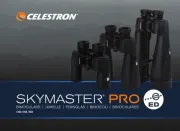
11 Mei 2025
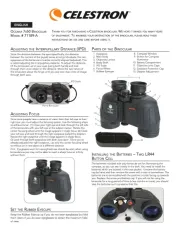
11 Mei 2025

31 Maart 2025
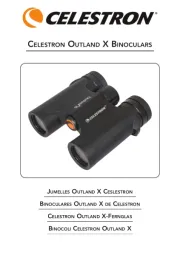
31 Maart 2025
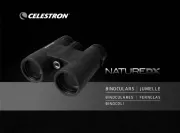
31 Maart 2025

25 Juni 2023

20 Mei 2023

19 Mei 2023

6 Mei 2023

5 Mei 2023
Handleiding Verrekijker
- Kodak
- Guide
- Leupold
- Leica
- Rocktrail
- Goview
- Berger & Schröter
- Swarovski
- Swarovski Optik
- AGM
- Traveler
- Pentax
- Crivit
- Osprey
- Auriol
Nieuwste handleidingen voor Verrekijker
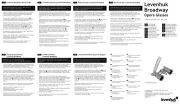
11 September 2025
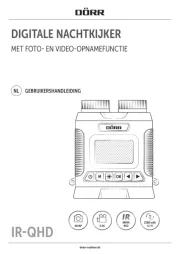
1 September 2025
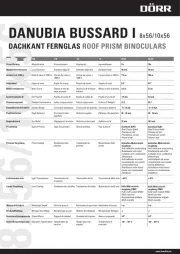
25 Augustus 2025
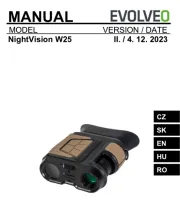
15 Augustus 2025

5 Augustus 2025

22 Juli 2025

22 Juli 2025
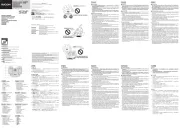
21 Juli 2025

21 Juli 2025
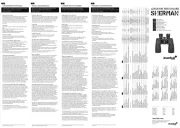
21 Juli 2025